“Where do you think we are, Ecuador?!” my friend Henry shouts. He is huge, muscled, long-haired, from Quito, and leaning the front half of his torso out my window to threaten the tourist in a Honda Accord that is trying to pass us. The Honda motors by, almost hits a bus in the oncoming lane, and is subsequently blocked from re-entering the gridlocked traffic.
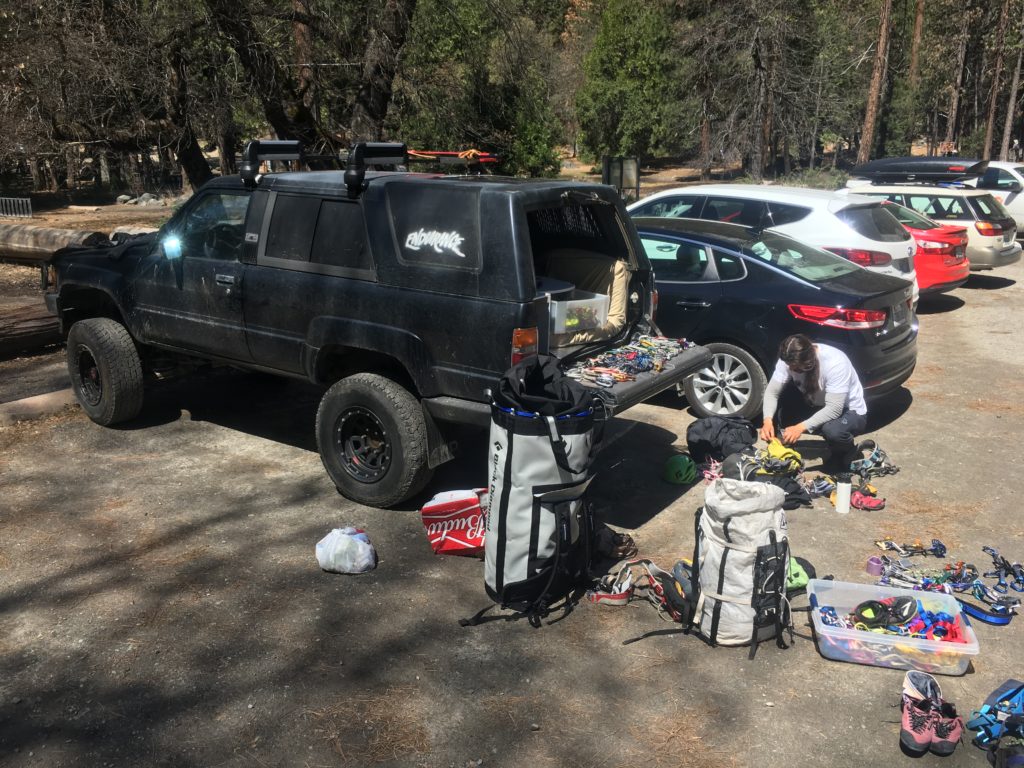
Henry and I have made a big mistake. We decided to drive the Yosemite loop road the couple of miles to the trail for the climb we did that day instead of taking the shuttle. You’ll read everywhere about the insanity of Yosemite Village (aka, the “Yosylum”) during tourist season, so I’ll just confirm: it’s a bizarre juxtaposition of wilderness and humanity. Bigwalls are a football field away from massive hotels. It took us two hours to drive two miles.
Henry, Jesse, and I have agreed that it’s high time we got our asses up on a big wall. Henry flew in from Ecuador for the NOLS field season, I boogied down from California, and Jesse drove over from Jackson. And blew up his car, which set him back only a few days — Henry and I did some classic free climbs and bummed around Camp 4 while we waited for him. On our second night in Camp 4, a group of boulderers from Japan set up a crash-pad landing zone at the base of Midnight Lightning, the iconic (and burly) boulder problem sitting in the middle of the campground.
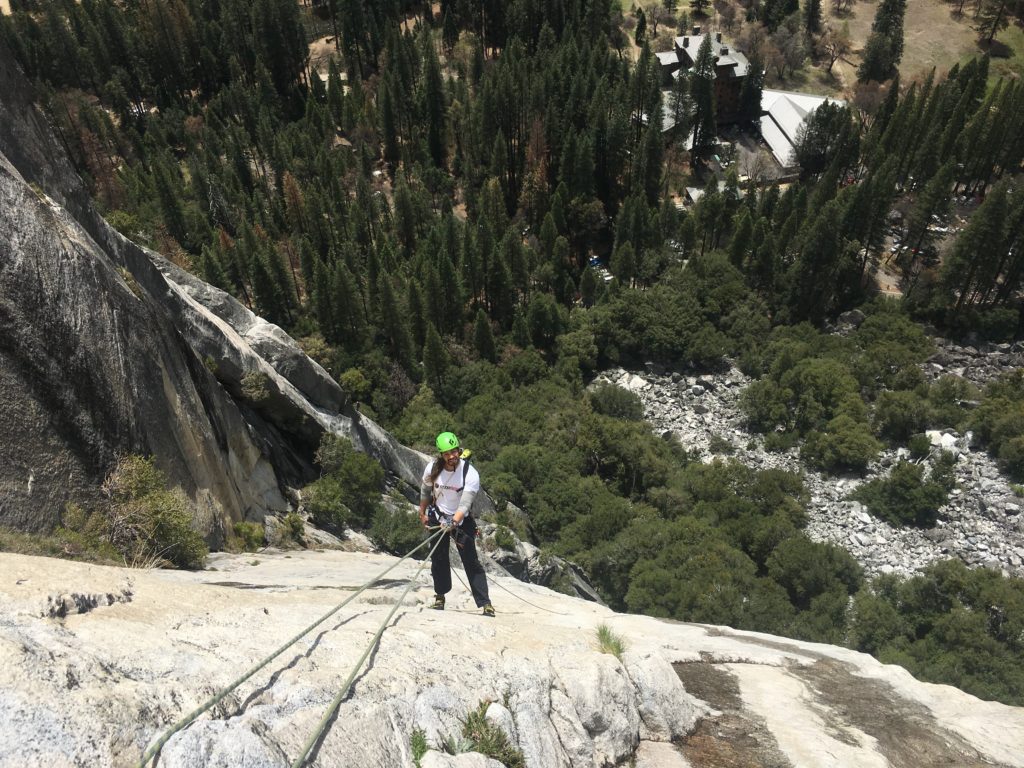
Climbs typically are considered Big Walls when they are long enough that most people can’t do them in a day, and have to bring overnight gear. Overnight gear requires a haul bag — a big nylon tube you scrape up the wall — and a haul bag requires another rope and a hauling system. Often, big walls require some aid climbing, which is using metal gear to gain vertical rather than just your hands and feet. The theme here is complication. More stuff, more systems, more slow. But it was a climbing skill we all lacked and were determined to acquire.
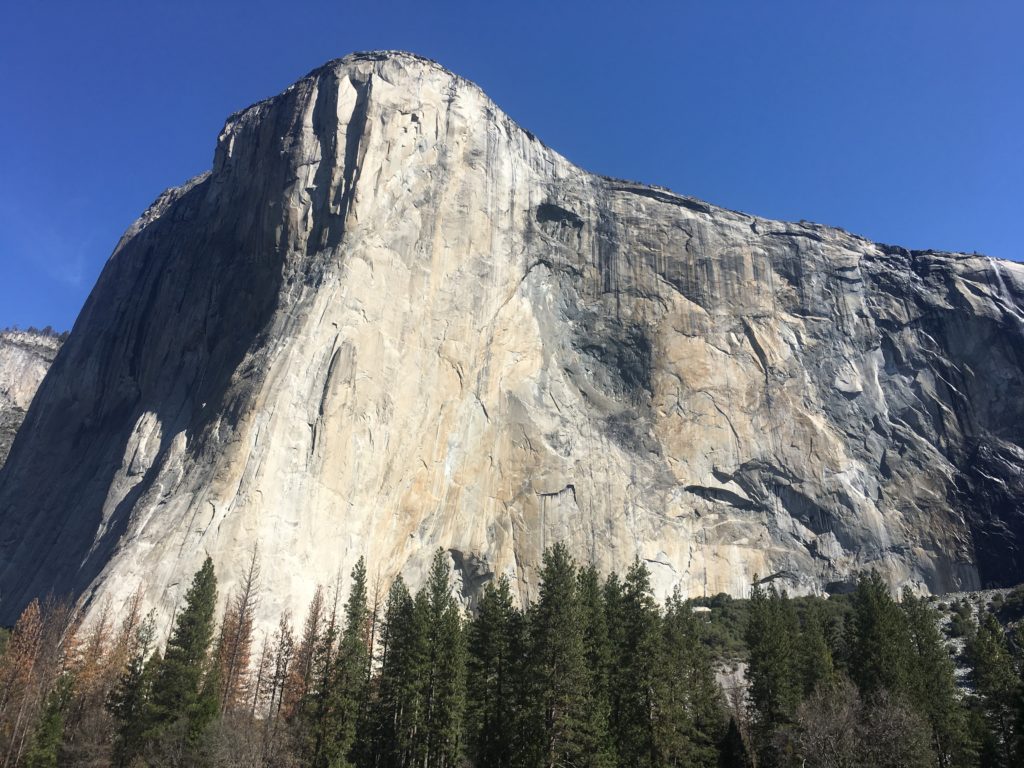
WASHINGTON COLUMN
We have a moment at the base of the first pitch: What actually are we doing? Jesse and I exchange glances as we dump gear out of our backpacks and I say, “Dude. How many ropes do we even need?” And this is a pretty good summary of how prepared we actually were to go walling. But we had the Chris MacNmara Big Wall Bible (“C-Maaaaack!” We would become fond of yelling while figuring things out) and a lot of climbing sense. We had confidence we would figure it out.
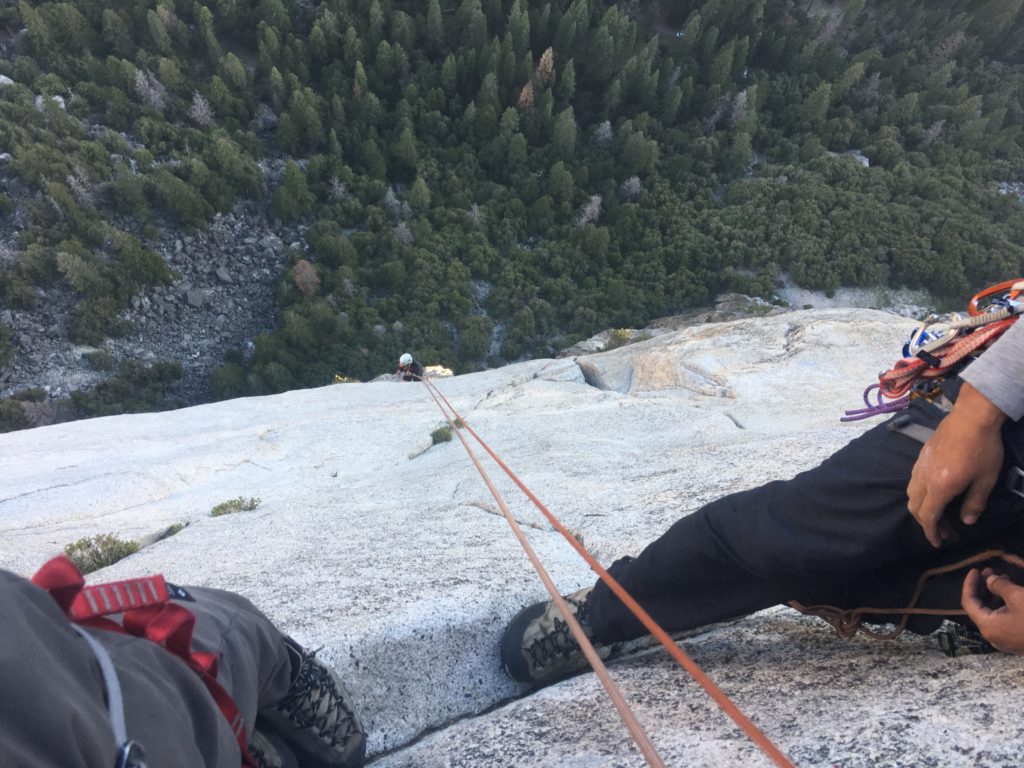
Our first attempt was thwarted not by our own incompetence but by the party of like-minded goobers in front of us. The Ganja squad, another party of three, was already a couple of pitches above us when we started. We figured that there was no way they would fumble the rope systems as hard as we already were — so far we had got the haul bag, with all of the overnight gear and food for three dudes, stuck on every pitch. But somehow we caught up, and waited, and pretty soon we were hanging at a belay in the dark. The Ganja squad seemed fairly competent, though glacially slow and very stoned.
Eventually we made it to Dinner Ledge, a spacious chunk of stone jutting out of Washington Column, and set up for bed and dinner. This wasn’t an ass cheek and-a-half type of ledge and thus a pretty cozy and scenic place to spend the night out. Plus, the Ganja squad shared their snacks. Stoners always have good snacks. More people appeared on the ledge in the morning and our ledge partners were flailing ahead of us, so we decided to bail after the Kor Roof the next day, having moved into the phase of, knowing-what-you-don’t-know.
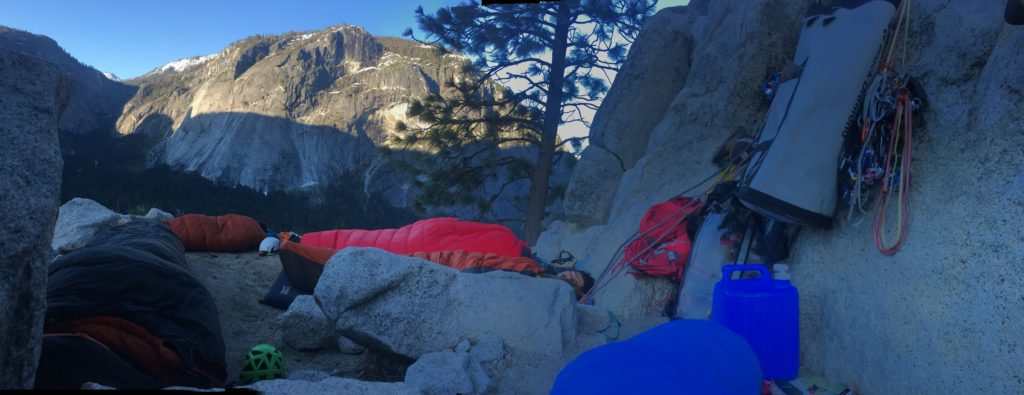
We cruised the route on our second attempt, opting to free everything 5.10 and easier. Our previous fumbles had brain-gelled on the rest day we took and all of the technical aspects were starting to go smoothly. Having already experienced the joy of cleaning the near-vertical Kor Roof, we took a slightly harder variation to the left, fixed a line, and settled in for a long afternoon and evening with the ledge to ourselves.
On a 5.9 pitch I’m leading the next morning I stuff my hand into a crack and immediately rip it back out, horrified. It is covered in a greasy, thick coat of tiny ants. They stink; the smell of ants is overpowering and suddenly they are crawling up my arm and both of my legs. I scream and shake my limbs and almost pitch out of the crack while worried faces beam up at me from the belay. “Riley! What’s going on, dude?” Jesse shields his face from the sun and shouts up at me.
“ANTS! Fucking fuck! Ants everywhere!” I yell back down. Ants seem like a stupid reason to take the fall I was looking at so I punched a few moves past the horizontal crack with ant-covered hands and shoved my shoulder into the wide crack above and did my best to purge my limbs of greasy, smelly ant guts. Rock climbing is weird.
Jesse and Henry took us to the top of Washington Column and we had a good laugh on the top about our aspirations to show up in Yosemite and blast the Salathe Wall. Here we sat in a jumble of gear having taken two tries to climb the easiest wall in the Valley. Humor and humility are climbing lessons that just don’t get old.
LEANING TOWER
I get pulled over by a Park Ranger who says, “Uh, that guy in the back of your truck needs a seatbelt.” He doesn’t seem to acknowledge the fact that we are driving less than two miles and that he pulled me over a few yards from our destination, so I said I was a tourist and apologized. “Yes, of course, thank you, goodbye.”
The approach to Leaning Tower is ridiculously short, though the last fifty yards of 4th class to get to the base of the first pitch bolt ladder is painfully slow to manage with a huge haulbag, and felt like the crux of the whole route by the time we got down. Leaning Tower is a chunk of stone that lives up to the name: it’s over a thousand feet tall and overhangs by 95-110 degrees the whole way up.
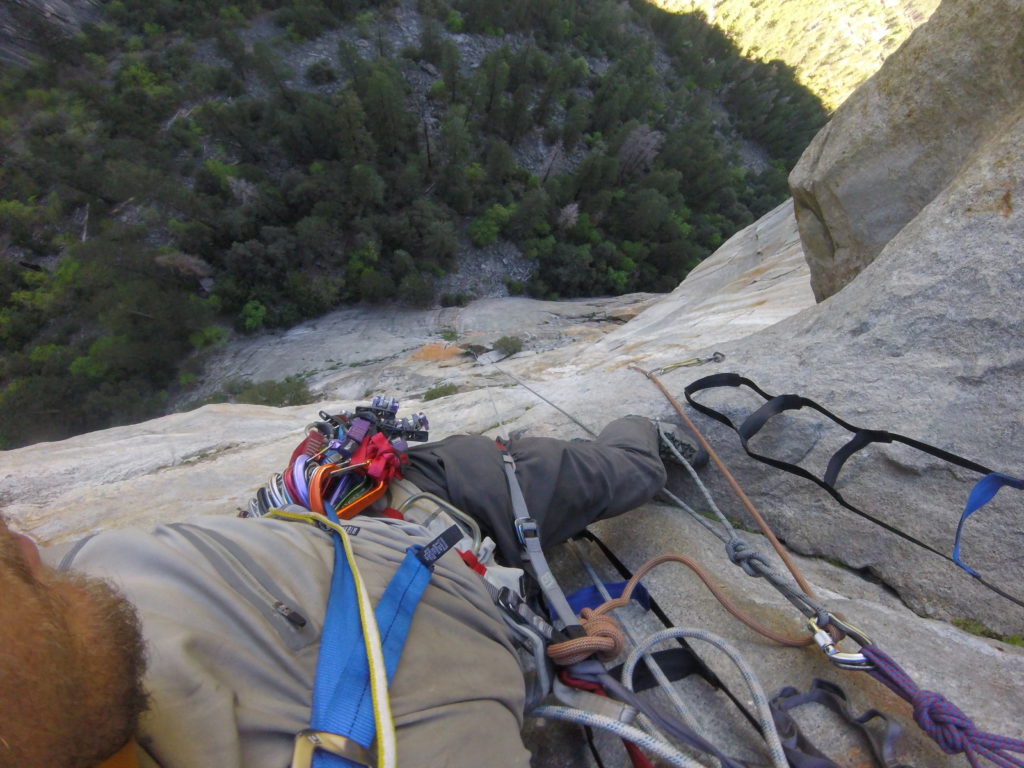
The exposure hits you like a sucker punch. It comes outta nowhere and leaves you breathless and gaping downwards at a thousand plus feet of pure, open air. A memory burned into my brain is standing in my aiders on the first bolt ladder pitch and then standing up to gingerly weight a blindly-placed Sky Hook and turning down to see the rope blowing in the wind and six hundred feet of open air below. Rad.
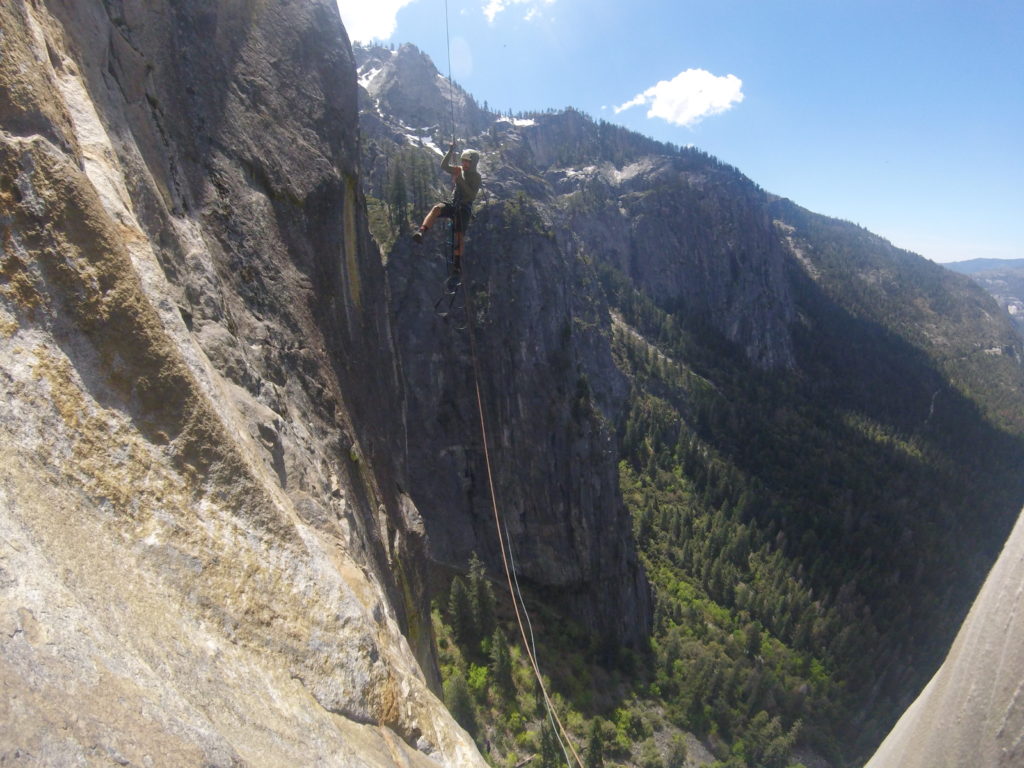
The Awahnee Ledge in the middle of Leaning Tower isn’t quite as plush as Dinner Ledge, but is still at least shoulder-width wide in most spots and decently flat. Two local crushers are hanging at the ledge when we arrive, waiting for sending temps on the 5.13+ free variation they were working. While this was cool to see, it made our evening accommodations slightly less comfortable. I slept with part of my shoulder hanging in space, which wasn’t as stressful as I thought it might be.
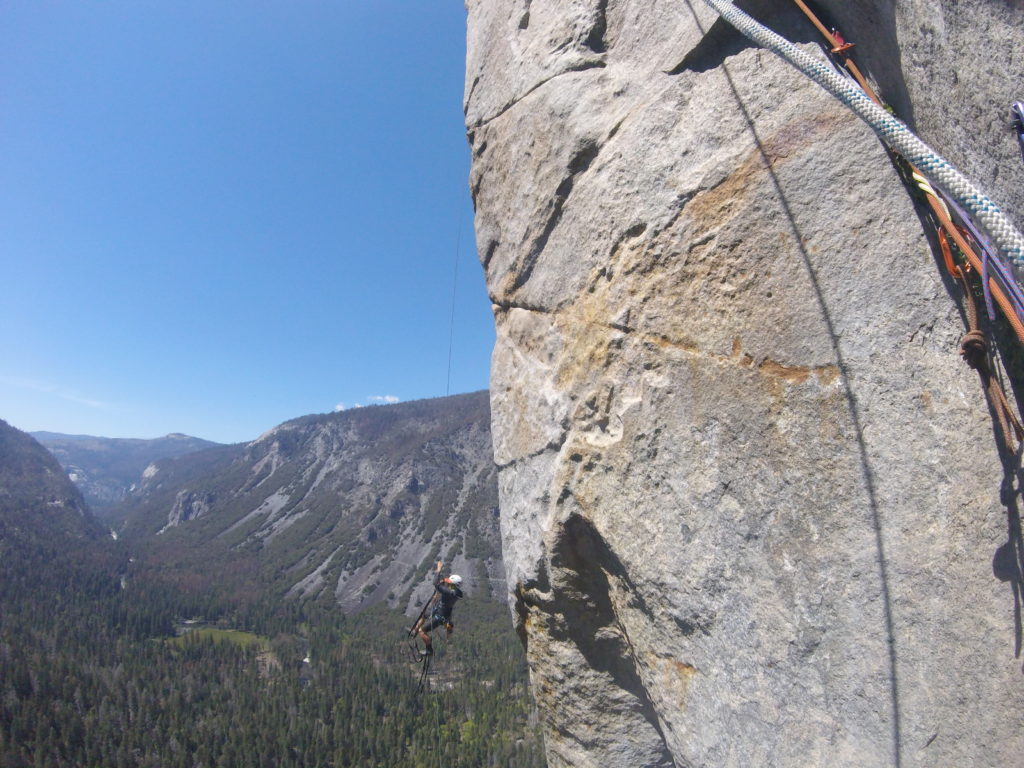
The next day was hot and long but continued to go smoothly. I cleaned another steep, roof pitch and started to feel competent with lower-outs and other aid climbing trickery. The relief of being back to the base was profound, unexpected. The constant exposure wears you down.